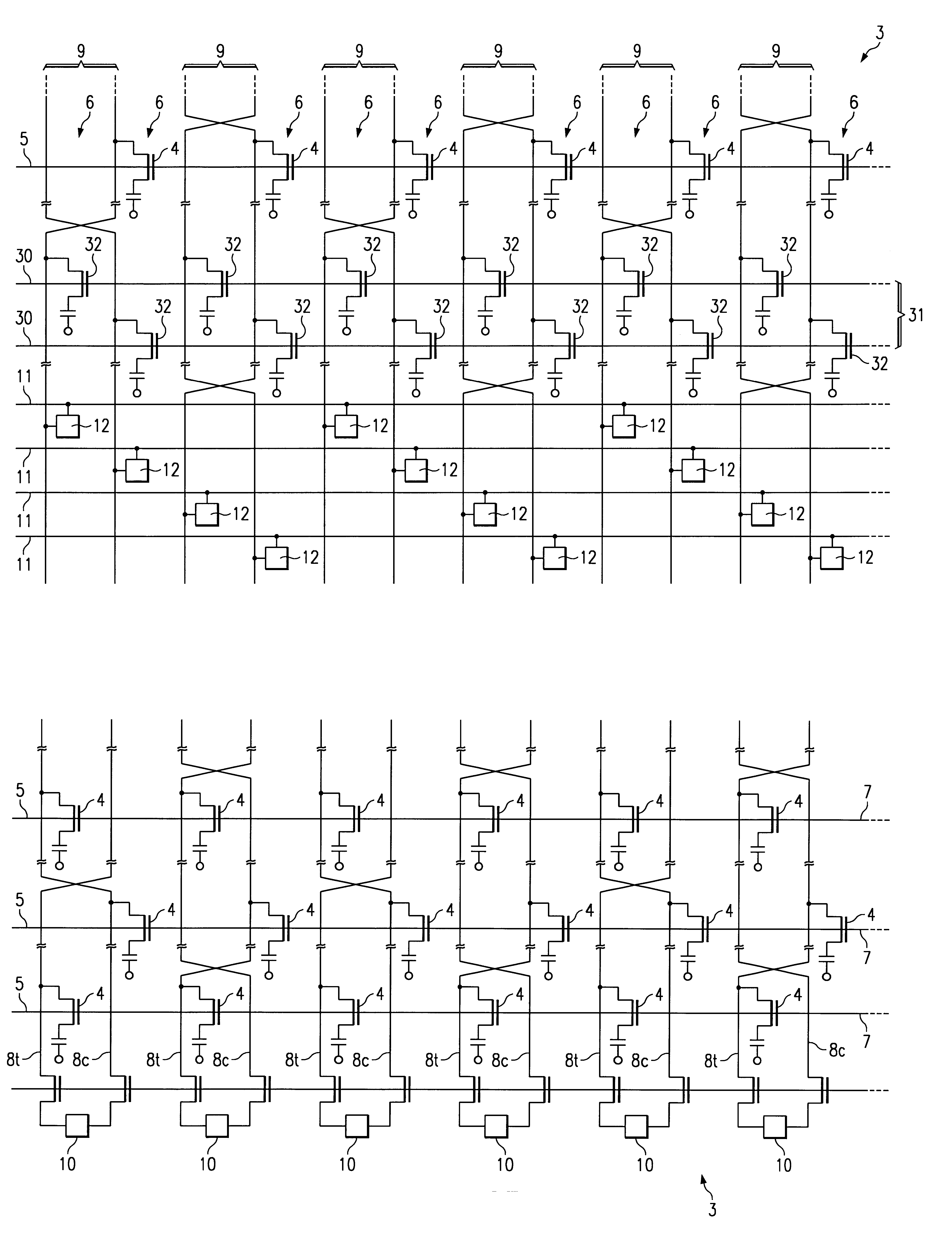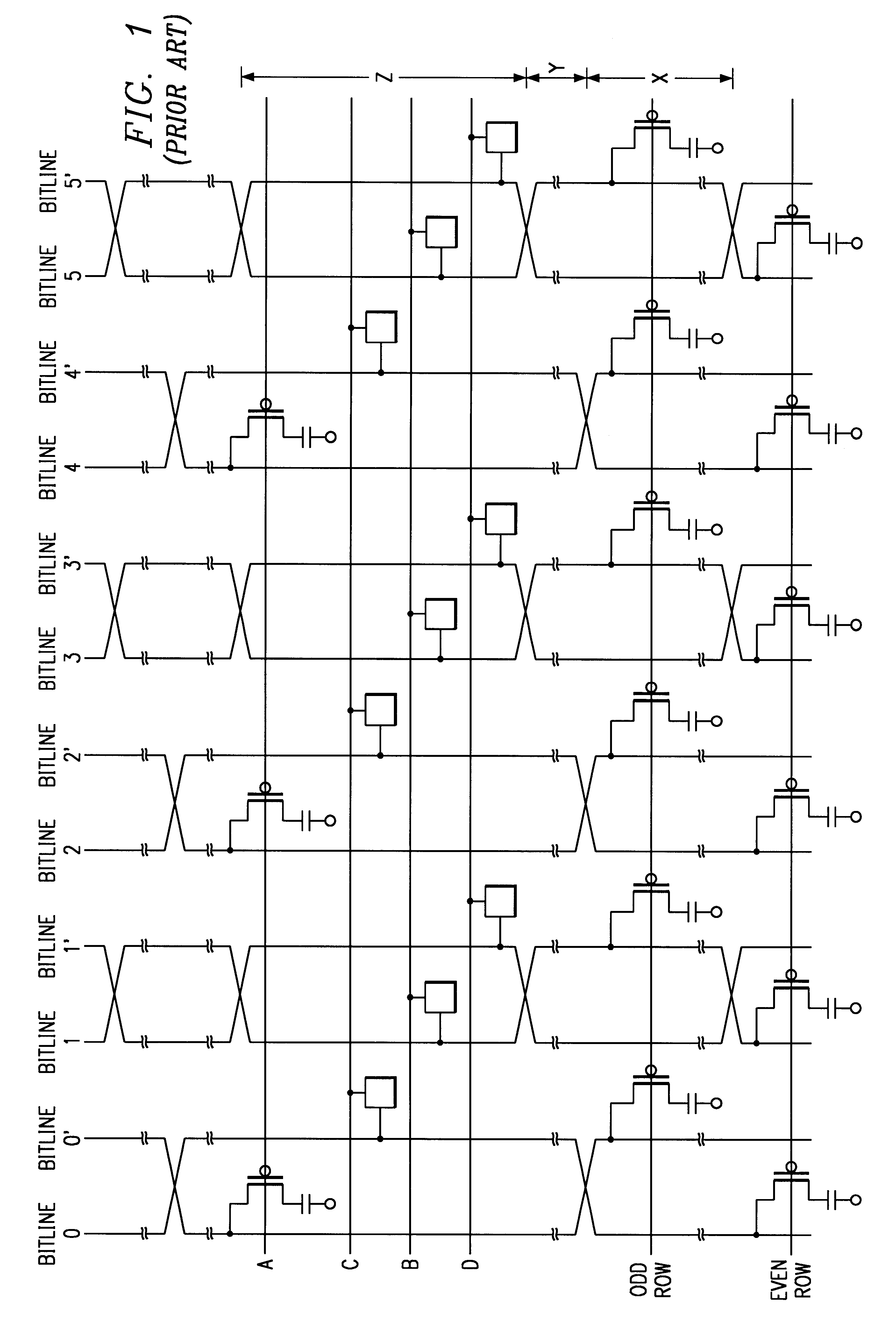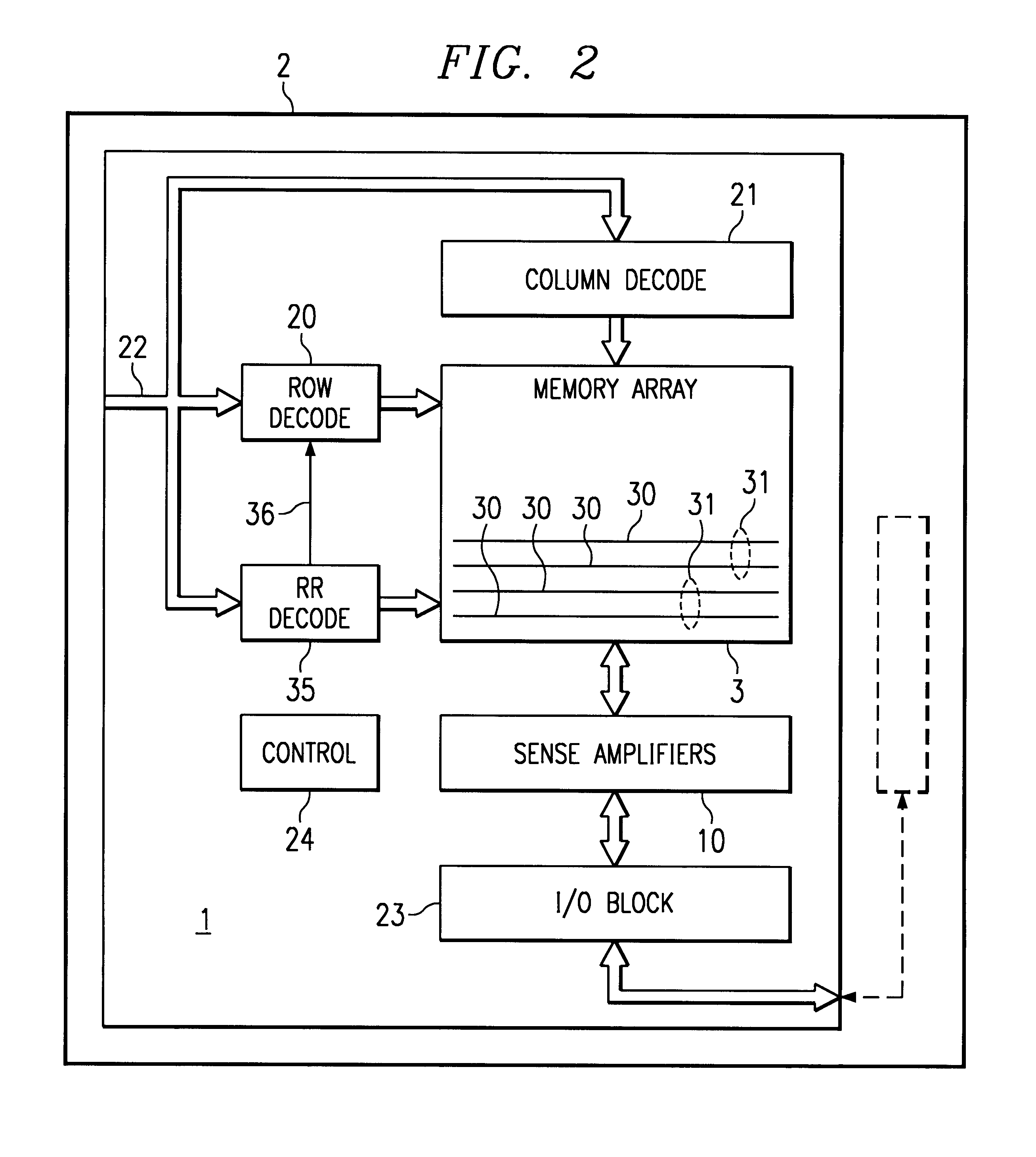Redundant memory cell for dynamic random access memories having twisted bit line architectures
a dynamic random access memory and memory cell technology, applied in the field of redundant rows of memory cells, can solve the problems of increasing circuitry overhead, complicated decoding of reference cells rows, and limited use of redundant rows
- Summary
- Abstract
- Description
- Claims
- Application Information
AI Technical Summary
Problems solved by technology
Method used
Image
Examples
Embodiment Construction
The present invention will now be described more fully hereinafter with reference to the accompanying drawings in which a preferred embodiment of the invention is shown.
Referring to FIGS. 2-3, there is shown a dynamic random access memory (DRAM) device 1 according to a preferred embodiment of the present invention. DRAM device 1 may form part or all of an integrated circuit 2. For example, DRAM device 1 may be a stand-alone, off-the-shelf memory device 2. Alternatively, DRAM device 1 may be an embedded memory within integrated circuit 2 that also includes application specific circuitry (shown in dashed lines) so as to form an application specific integrated circuit (ASIC).
DRAM device 1 includes a memory cell array 3 having memory cells 4 organized into a plurality of rows 5 and columns 6 (FIG. 3). Each row 5 of memory cells 4 is coupled to a distinct word line 7, and each column 6 of memory cells 4 is coupled to a distinct bit line 8. A row of memory cells 4 is activated and connect...
PUM
 Login to View More
Login to View More Abstract
Description
Claims
Application Information
 Login to View More
Login to View More - R&D
- Intellectual Property
- Life Sciences
- Materials
- Tech Scout
- Unparalleled Data Quality
- Higher Quality Content
- 60% Fewer Hallucinations
Browse by: Latest US Patents, China's latest patents, Technical Efficacy Thesaurus, Application Domain, Technology Topic, Popular Technical Reports.
© 2025 PatSnap. All rights reserved.Legal|Privacy policy|Modern Slavery Act Transparency Statement|Sitemap|About US| Contact US: help@patsnap.com



